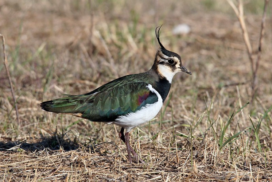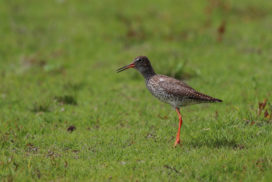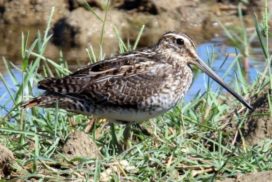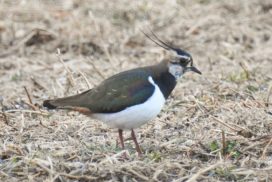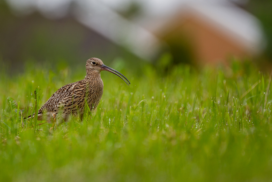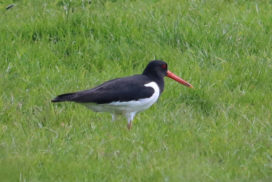Providing for wading birds
Many wading birds including the lapwing, curlew, and snipe, are now priority birds for conservation action in the UK. Waders rely strongly on insects for food; particularly soil insects that they find by probing soft ground. They frequent wetlands and coastal areas, but during the breeding season, many species move to farmland to lay their eggs in small scrapes in the ground.
Low chick survival is a primary driver of wader declines. Their ground nests are vulnerable to predation, livestock trampling, and agricultural machinery. Chicks can also struggle to find enough food or suitable foraging sites. The simplification of farming systems makes it difficult for species such as the lapwing that move locally between different farmland habitats to nest and feed.
To help increase survival rates in wading chicks there are a number of actions farmers can take:
- Provide safe nesting sites. In areas where waders are nesting reduce stocking rates and delay rolling and cutting until June. Mark nests to avoid destruction by machinery.
- Provide areas of wet soft soil that are rich in invertebrates. Suitable habitats include wet field corners or gently sloping ditches. Consider creating wader scrapes – shallow depressions with gently sloping sides that seasonally have standing water.
- Increase the abundance of soil invertebrates. Management to improve soil health will increase soil invertebrates such as earthworms and benefit production.
- Reduce predation pressure. Wading birds such as lapwing like to feed in relatively open habitats. Areas of denser vegetation in grazed fields will provide cover. Where predator densities are high, consider ways of reducing predation pressure.
Resources
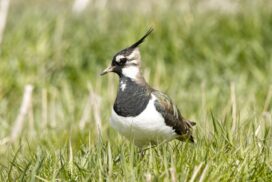
Grassland for Waders Management Calendar
Download our handy calendar which provides a month-by-month guide for grazing and grassland management for waders.
Technical Note (TN688) - Management and Conservation of Farmland Waders
Technical Note (TN742) - Predator Control for Conservation
Technical Note (TN705) - Management of Wetlands for Wildlife
Technical Note (TN701) - Control of Rushes
RSPB Land management advice for farmers
In this episode of the Thrill of The Hill podcast, host Alex Pirie chats to Patrick Laurie from Working For Waders. They discuss the decline of waders in Scotland, the practical steps that farmers can take to counter the biodiversity crisis as well as reflect on good practice, the trees versus waders debate amongst other topics.
In part two we hear from returning guest, Working for Wader’s Patrick Laurie, joined this time round by RSPB’s Stephen Field, about the importance of our national priority ground nesting wading birds, life through a lens, the importance of predator control and promoting landscape scale conservation efforts.
Increasingly recognised for their conservation importance, Scotland’s waders are under threat from all sides. Intensification of agriculture has played its part, yes but looming threats of habitat loss to forestry and destruction of nests and eggs from predators also places immense pressure on the species group. The podcast also sets out the need for data to inform decision making and how looking at small samples can skewed view of what is a more complicated story overall.
Predator control for the conservation of ground-nesting birds can sometimes be a controversial issue. In this podcast, Senior Conservation Consultant at SAC Consulting, Paul Chapman, discusses the practicalities with NatureScot’s Alastair MacGugan and hears about an alternative approach to predator-prey conflicts in the Cairngorms Connect project, from Kenny Kortland of Forestry and Land Scotland.
Sign up to the FAS newsletter
Receive updates on news, events and publications from Scotland’s Farm Advisory Service

